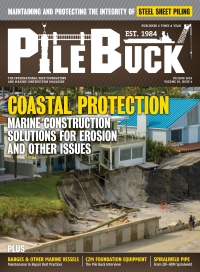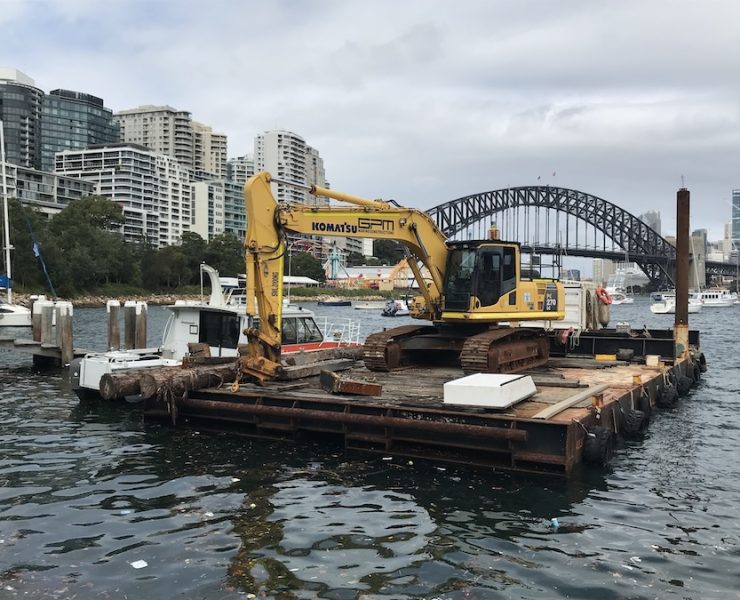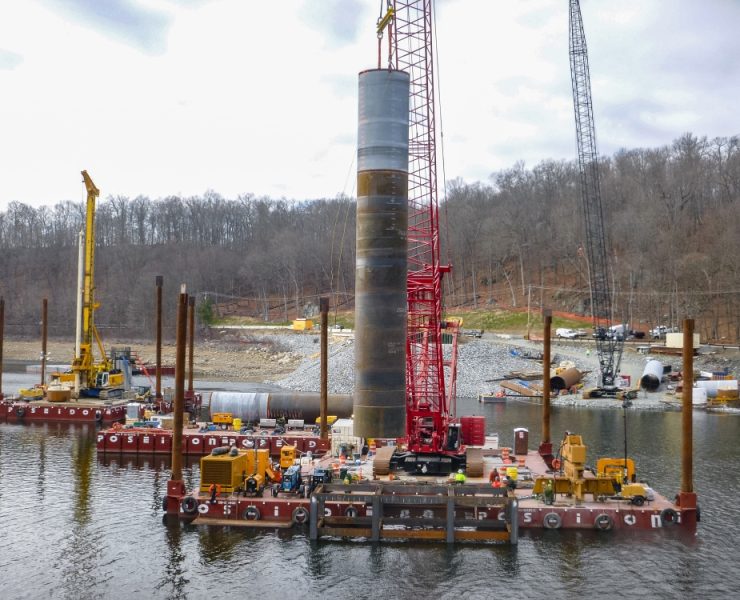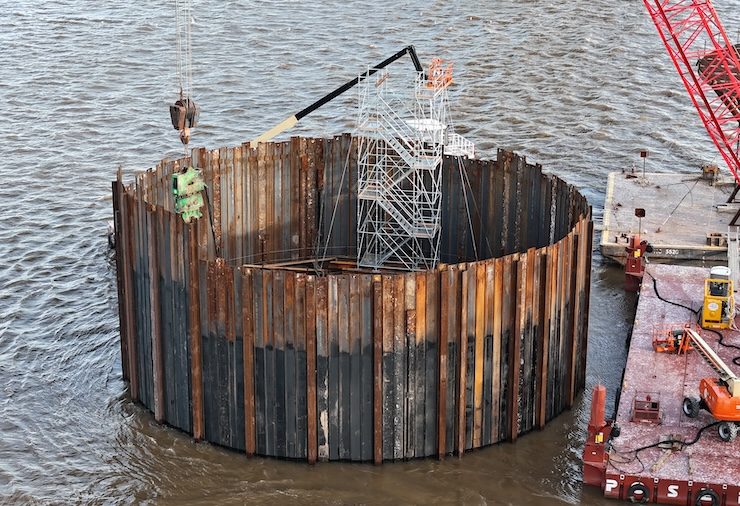Coastal Erosion and Sea Wall Construction in the Bahamas
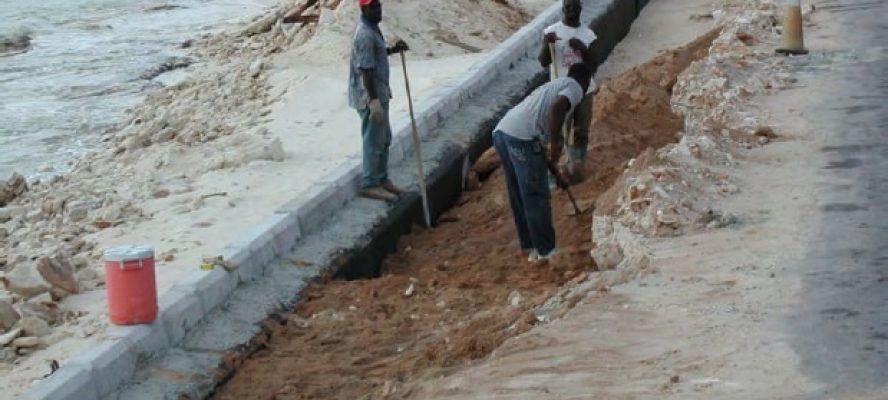

Recent hurricanes, specifically dating from Hurricane Floyd in 1999, have drawn attention to thevulnerability of shoreline infrastructure in The Bahamas to storm damage. A patchwork of seawalls in New Providence, and to a lesser extent in other islands, have proved prone to failure andhave had to be rebuilt or replaced. An examination of the need for sea walls has identifiedproximity of roads to the shore as a major factor in the loss of natural defences. A preliminarystudy on San Salvador indicated that where the road had encroached within 40 metres of the lowwater mark the sand dunes were impaired and vulnerable to total destruction during storm events.The response has been to construct expensive sea walls rather than re-align the road. Examinationof older walls on New Providence indicated that the walls themselves contributed to shorelineretreat and further erosion, necessitating bigger walls and other protection measures. On CatIsland recently constructed sea walls were already being damaged due to faulty location orconstruction. It was concluded that sea wall construction was largely an inadequate response topoor coastal zone management, and a ‘soft’ approach should be considered in many cases, asopposed to ‘hard’ structures which perpetuate the conditions they are supposed to alleviate.(French, 2001)
Introduction
Earlier this year it was announced that a number of sea walls would be built along West BayStreet in Nassau with aid from the Inter-American Development Bank, and this was followed by further announcements of another one million plus dollars to repair sea walls on Cat Island and some two million for sea walls in Eleuthera. The way this was portrayed was that this would be amajor contribution to the infrastructure and security of these islands, as would a number of other projects completed in recent years such as on San Salvador.
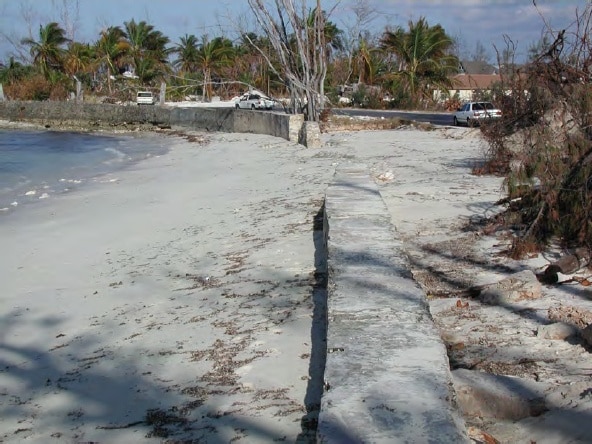
The truth of the matter is rather different and certainly more complex, but briefly the constructionof sea walls, and particularly the ones being built or rebuilt under the present programme, islargely a response to previous environmental abuse, and it is likely to perpetuate that abuse. Inmany cases countries with similar shoreline problems have turned away from the ‘hard’ solutionof sea walls and other structures, and undertaken ‘soft’ solutions aimed at restoring the naturalcoastline and avoiding the later problems that sea walls create.
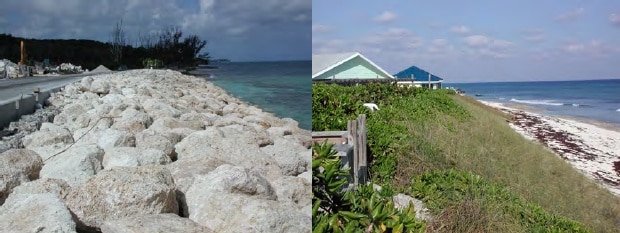
In the case of The Bahamas shoreline erosion is due to number of factors which may include offshore dredging, stealing sand from beaches and sand dunes, construction on the beach or immediately offshore, or vegetation removal. But the main cause in the recent spate of sea wall building has been the construction of roads too close to the shoreline in the past. This has meant that the natural processes of beach and dune development have been interrupted, with resultant erosion. An examination of the sea walls on West Bay Street reveals that they are all located where the road is close to the shoreline, and this is what caused the problem originally. To further protect the road new walls, as at Gambier, or rebuilt ones, as at Rock Point, have been built. Apparently no thought has been given to moving the road back from the shoreline and restoring the beach and dune artificially.
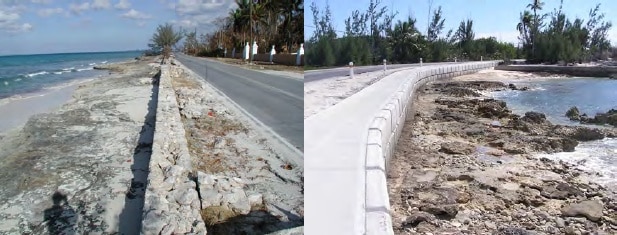
This is virtually unheard of in this region, although private bodies such as Atlantis have in fact undertaken beach restoration quite successfully. In Nassau the Orange Hill community has restored the dune facing their properties through a programme of casuarinas removal and re-vegetating the back beach area, but it is clear that this has only been possible where sufficient width from the waterline to the road existed. At the eastern end erosion continues due to the proximity of the road to the beach. A survey of beach and dune erosion in the Fernandez Bay area (west coast) of San Salvador, where a considerable length of sea wall has been constructed, indicated that erosion occurs whenever the road encroaches within about 70 feet of the low water mark (Table 1).
Table 1. Relationship of road setback to dune erosion along Fernandez Bay, San Salvador.
| Low Water to Dune Face (Feet) | Width of Dune (Feet) | Distance to Road (Feet) | Height of Wall Face (Feet) |
| 72 85 84 85 72 73 72 48 54 75 75 75 75 66 45 42 33 39 65 55 – 42 |
42 35 33 45 48 30 20 eroded 40 60 33 30 Wall Wall Wall Wall Wall Wall Wall Wall Filled area Wall |
114 140 137 130 120 103 92 68 94 135 108 105 75 66 45 42 33 39 65 55 – 42 |
1 1 4 4 5 5 2 24-5 |
Note: Distances in feet accurate to about +/- 5% due to indeterminate waterline and dune face boundaries, and measuring method (pacing). Measurements at about 300 feet intervals from Cockburn Town cemetery south to end of wall.
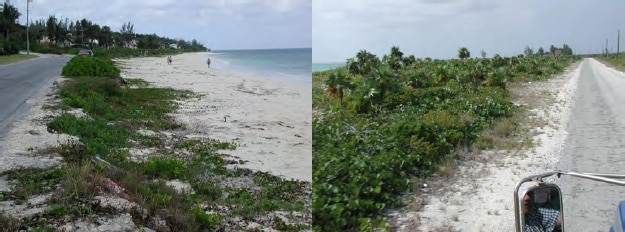
Wherever the road is further away there is no erosion, and clearly all that has to be done is to move the road back from the shoreline area, and in this case there is plenty of room. A similar situation exists along the west coast of Cat Island from Tea Bay to Smith’s Bay Settlements, and once again moving the road would ensure its future security, as well as restoring the amenity of the beach. In the case of Cat Island the situation is worsened by the fact that the ends of the walls have not been finished properly and are already failing, so have to be repaired. In fact this is an enduring problem with sea walls, which, far from being self-sustaining, are actually self-destructive.
Problems typically associated with sea walls

Scouring
As the wall presents a vertical face to the waves, the waves are reflected back and scour sand and rock from in front of the wall. This increases the drop to the sea floor and leads to the eventual collapse of the wall. This is why the huge boulders, commonly referred to as rip-rap, but also described as beach armouring, have been placed in front of the revetment west of Rock Point on West Bay Street. The rip-rap breaks up the waves and prevents scouring, eventually leading to sand accumulation at the foot of the boulders, This started appearing on West Bay Street at low tide about 2 years after the wall was built. However this is an expensive and partial solution. Without the road or the wall the sand would have come back anyway. This is also an indication of what will be required of all the walls presently without armouring – sooner or later this expensive and ugly procedure will be needed to protect the walls that protect the road that destroyed the beach. And of course any new beach will be virtually inaccessible anyway.

Wall Collapse
It has been indicated that walls create conditions for their own demise, but apart from that, unless built to extremely high (expensive) standards, they will fail for other reasons. The sea defences built at the Caves Point failed after Floyd, again after Michelle, and again after Frances, and photos taken at the time show almost exactly the same destruction of a badly built wall. In essence this wall was simply a lot of fill with a skin of concrete over the top. Waves broke over it and washed back under it to push the top off and expose the fill inside. The more recent walls are designed to prevent this with much stronger design components and back-water drainage channels.

Wall-end Failure
Unlike San Salvador, which has one continuous wall, Cat Island has a series of walls at each point where the road was threatened or washed away. In every case the ends were not finished properly and have started to erode, and eventually the seawalls will collapse from each end towards the middle. This is already happening at one location.
Alternatives to Sea Wall Construction
The soft solution to protecting the coast and the infrastructure is less of a quick fix, and in the short term is likely to be more expensive. Nevertheless this is the approach being taken in many areas following the failure of sea walls.

2. Dune rebuilding is simple and can also create an amenity – Guana Cay, Abaco.
Setting Back
The most obvious case is to relocate a road back from the shoreline. As a rough guide 100-200 feet will serve most Bahamian shorelines due to the small tidal range, but exposure to waves and the offshore profile are also factors – shallow sea beds as along the south coast of New Providence are easier to protect, but high energy shores need greater setbacks. However it is not just roads, but houses, hotels, docks, marinas, jetties, groynes and other structures that should also be scientifically examined for their impact on beach erosion
Dune Rebuilding
Where the dunes heave been lost, as on San Salvador, or at Orange Hill here on New Providence, they need to be rebuilt with sand from the immediate locality. This of course needs to be done in conjunction with beach feeding if necessary, and with vegetation replanting. A successful example of dune restoration is currently being monitored on Guana Cay.
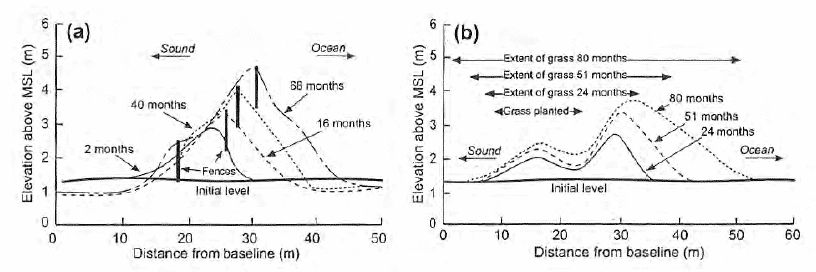
Beach Nourishing
This essentially means adding sand to the beach to restore it to past levels, a process well known from southern Florida’s beaches and practiced along much of the eastern seaboard of the USA. If done with a proper understanding of the dynamics of sediment movement along the shoreline and with the appropriate sand this can be a pleasing and self-sustaining fix.
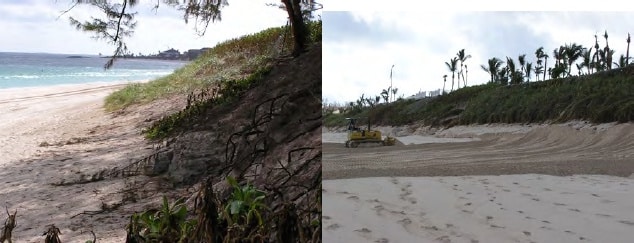
Scraping sand back to dune after H Frances, Paradise Island.
Re-vegetating
In many cases the first impact of man is the removal of vegetation from the dune or back-beach area. If this is all that has happened then removing the structures that destroyed the vegetation (such as roads, parking areas, buildings), and replanting suitable vegetation, will restore the area. If dune or beach rebuilding is also necessary, as noted above, the areas above the high water mark will also have to be replanted with suitable species.

2. Replenished beach on Paradise Island immediately after H Michelle, 2001.
Conclusion
Expensive sea walls have their uses, and especially so where there is no chance of relocating manmade structures, such as in downtown areas. The Woodes Rogers’ Walk, and the new promenade/sea wall at Arthur’s Town on Cat Island, are justifiable structures. However, the spate of sea walls planned for high-energy coasts is simply a case of throwing good money after bad, and setting up a scenario for endless rebuilding linked to high value amenity loss. Walls will not stop shoreline erosion, and they will probably increase it at the same time that they remove another amenity, namely the sandy beach on which the economy depends! As the sea walls considered here are almost exclusively aimed at preserving badly sited roads, and not aimed at coastal protection or restoration, this is not surprising. We can hardly blame highway engineers for looking after their own structures, but we should ask why the much more valuable resource of the beach/dune shoreline does not have its own coastal engineers, and the necessary institutions, to protect it.
Why are sea walls being constructed in the Bahamas, and are they an effective solution to coastal erosion?
Sea walls are being built in response to shoreline vulnerability caused by factors like road construction near the shore, but they may perpetuate environmental issues and fail to address the root causes of coastal erosion.
What are the alternative solutions to sea wall construction for coastal protection in the Bahamas?
Soft solutions like setting back roads, dune rebuilding, beach nourishing, and re-vegetation offer more sustainable alternatives to sea walls, preserving natural coastlines and avoiding the pitfalls associated with hard structures.











